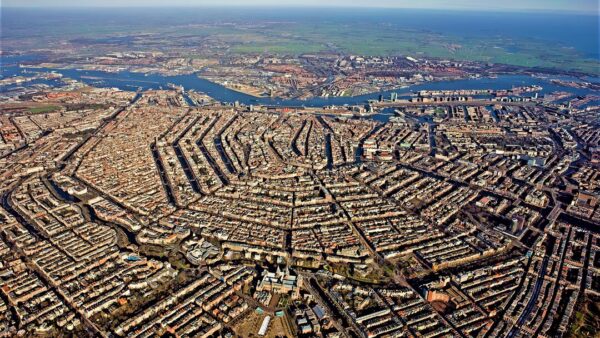When Hurricane Sandy hit New York City back in 2012, it sent 16-foot waves surging through the southernmost streets of Staten Island. The inundation killed a father and daughter and left a band of flooded homes and eroded coastline along the New York seaboard.
Now, engineers are preparing to meet the sea’s next assault with an offshore wall of a particularly appropriate material: oysters.Â
The idea was conceived by New York architect Scape/Landscape, and was one of three projects to be awarded funding from the “Rebuild by Design” programme, a federal scheme to rehabilitate areas destroyed by Sandy.
One oyster can filter up to 50 gallons of water a day– Kate Orff, SCAPE
Its Living Breakwaters proposal received $60m for a pilot program in Raritan Bay, off the southern tip of Staten Island. Kate Orff, a landscape architect who worked on the project, argues that oysters are ideal breakwater building blocks.
“The eastern oyster is a modest creature but it can agglomerate into mega reef structures,” she said, going on to list its other benefits: “It can grow and it’s also quite tasty. It accepts algae and detritus in one end, and through this beautiful, glamorous set of stomach organs, out the other end comes cleaner water. And one oyster can filter up to 50 gallons of water a day.”Â
She points out that using oysters will actually return the harbour to its pre-industrial state.Â
“Oyster reefs used to covered about a quarter of New York harbour and were capable of filtering water in the harbour in a matter of days,” she said.Â
“Oysters can… agglomerate onto each other and form these amazing natural reef structures. They’re nature’s wave attenuators. So the core idea here was to hit the reset button and regenerate an ecology over time that was regenerative and cleaning and productive.”
To get things started the team will build three concrete breakwaters from Conference House Park to the Tottenville district of Staten Island, which was the area hardest hit.

New Yorkers scrutinise plans for an oyster wall (Scape/Landscape Architects)
The engineer on the project is Parsons Brinckerhoff. Pippa Brashear, Parsons’ public realm designer, said wave attenuation is a serious business: “By attenuating the waves the project could reduce the flood plane in that area. We could bring it down by two feet, that could make the difference of a floor of your house being in and out of the insurance zone.”
One concern was that the locals might eat their breakwater. To prevent this, the team plans to install an “oyster cam” to monitor the safety of the bivalves.Â
“Anyone can log on and kind of check out the oyster cam,” says Gena Wirth, another of Scape’s architects. “There will be a camera out there that would help make sure that people aren’t harvesting the oysters to eat them.”
The project team is currently waiting for the government to transfer the funds to the state, which Wirth said they hope to get by the end of the summer. The project then still needs to go through regulatory procedures with the city and state, which means that construction will not start until two to four years’ time.
Comments
Comments are closed.







Plant swales can also be used they soak up tons of water and don’t cost anything